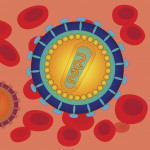Some people living with HIV, especially those who start treatment promptly using modern antiretrovirals, can stay on their first regimen for a long time. But others are unable to keep their viral load suppressed or have trouble with side effects—or they may simply want a more convenient regimen.
There are several reasons for switching medications, including the following:
- Viral load is not suppressed
- Inadequate CD4 cell recovery
- Difficulty taking medications
- Too many pills or too frequent dosing
- Poor tolerability (side effects)
- Drug interactions
- Pregnancy
- Medication cost or insurance.
Treatment failure means some medications in a regimen are not doing their job. The best way to tell whether medications are working is to measure viral load, or HIV RNA level. If your viral load does not fall to an undetectable level—or if it does not stay suppressed—not only are you at risk for disease progression, but you could also transmit the virus to others and could develop drug resistance that limits future treatment options. A single detectable viral load, known as a “blip,” is usually nothing to worry about, but if two consecutive tests show a rising virus level, it might be time to adjust your regimen.
Virological treatment failure can happen if HIV develops mutations that make it resistant to medications. This can occur when drug levels are too low, allowing the virus to replicate—for example, if a regimen is not potent enough, if drugs are poorly absorbed (some meds must be taken on an empty stomach or with food for proper absorption) or if interactions with other medications reduce drug levels.
HIV medications only work if you take them, and poor adherence is a common cause of treatment failure. Factors that can interfere with adherence include side effects, inconvenient regimens, forgetfulness, a hectic or unpredictable schedule, unstable housing and interrupted access due to cost or insurance issues. Tell your doctor or pharmacist if you don’t understand how to take your meds or are having trouble taking them as directed. Some drugs are more “forgiving” of an occasional missed dose.
What To Use Next
Which new regimen to use depends on your treatment history and why you are switching. In many cases, people who have been taking more than one pill a day can switch to a more convenient single--tablet regimen. Standard HIV regimens include three drugs, but people who have achieved an undetectable viral load may be able to switch to a two-drug maintenance regimen, such as Juluca (dolutegravir/rilpivirine) or Dovato (dolutegravir/lamivudine). Another option is Cabenuva (cabotegravir/rilpivirine), long-acting injections administered once monthly or every other month.
When switching due to virological failure, resistance tests can show which drugs are not working and which alternative antiretrovirals are likely to work best. Switching treatment is more challenging for people who have already used many drugs and have developed resistance to multiple medications (known as multidrug-resistant HIV).
Ideally, a new regimen should contain at least two, preferably three, fully active drugs, but this is not always possible. Some people may be able to add novel antiretrovirals that work in different ways, such as the monoclonal antibody entry inhibitor Trogarzo (ibalizumab) or the twice-yearly injectable capsid inhibitor Sunlenca (lenacapavir). Another option is joining a clinical trial, but currently, there are few experimental antiretrovirals in the pipeline.
Modern antiretrovirals are more potent, better tolerated, less likely to lead to drug resistance and more convenient than older meds. With the newest drugs, even people who have been living with HIV for years and have highly resistant virus can usually find a regimen that keeps their HIV in check.







1 Comment
1 Comment